The Squat is perhaps one of the oldest, simplest, yet one of the most holistic workouts ever. Older than a thousand years, the squat is a compound or full body movement which trains six primary muscles – core, thighs, quads, hips, glutes and hamstrings – with each rep. Doing squats regularly also strengthens your bones, ligaments & tendons in your lower body. It also improves your overall stability and posture. But doing the same exercise over and over again can get a bit boring, right? Well, today we will introduce you to seven squat variants which you may or may not be aware of but should totally include in your workouts schedule. Ready? Here we go!
1. Goblet Squat – The Goblet Squat gets its name because you hold the weight in front of your chest with cupped hands, just like how one would hold a goblet. This variation works on your glutes, core, hamstrings, lower back and shoulders.

Sets – 3
Reps – 10-12
Target Muscle: Glutes, Core, Hamstrings, Lower Back and Shoulders
How To Do:
Step 1: Stand with your feet slightly wider than hip-width apart and your feet turned out.
Step 2: Hold a dumbbell with both your hands at the middle of your chest.
Step 3: Push your hips out and squat down as you inhale.
Step 4: Hold the squat position for a second and get back to the starting position.
Step 5: Repeat.
2. Split Squat – The split squat appears very similar to the lunge except you don’t go back to a standing position after every rep. This variation targets the quads, hamstrings, glutes as well as your core.

Sets – 3
Reps – 10-12
Target Muscle: Quads, Hamstrings, Glutes and Core
How To Do:
Step 1: Stand with your legs hip-width apart and take a long step backwards such that the heel of your back feet is raised.
Step 2: Keeping your upper body straight, slowly lower your body till the back knee almost touches the ground.
Step 3: Hold the squat position for a second or two and get back to the starting position.
Step 5: Repeat.
3. Pistol Squat: If you are feeling particularly adventurous, you may want to try the Pistol Squat. Demanding a strong core stability and single leg strength, this workout is for advanced practitioners. Pistol Squats work on your hips, hamstrings, quadriceps, gluteus maximus and calves.

Sets – 3
Reps – 10
Target Muscle: Hips, Hamstrings, Quadriceps, Gluteus Maximus and Calves
How To Do:
Step 1: Stand with your legs hip-width apart.
Step 2: Extend one leg in front of you while slowly shifting your weight on the other leg.
Step 3: Raise your arms in front of you at chest level to balance your body.
Step 4: Bend your knees, squat down and deep while maintaining your balance.
Step 5: Hold for a second and get back to the starting position.
Step 6: Repeat
4. Jump Squat: Another advanced variation of Squat, the Jump Squat is a plyometric move that relies on your explosive power. Jump Squat builds muscle, burns fat and works on the fast-twitch muscles in your body. The main muscles engaged are quads, hamstrings, glutes, lower back and core.

Sets – 3
Reps – 10-12
Target Muscle: Quads, Hamstrings, Glutes, Lower Back and Core
How To Do:
Step 1: Stand with your legs hip-width apart.
Step 2: Push your hips out as you squat down while keeping your arms at the back form building momentum.
Step 3: With explosive power jump up in the air from the squatting position while swinging your arms upwards.
Step 4: Bend your knees while landing back to absorb the impact.
Step 5: Repeat.
5. Prisoner Squat: The Prisoner Squat gets it somewhat interesting name because the position looks very similar to someone being arrested. Because of the position of the hands behind the back, the Prisoner Squat requires more coordination and balance than the regular squat. This variation is great for improving core stability and overall balance.

Sets – 3
Reps – 10
Target Muscle: Glutes, Quads, Hamstrings and Core
How To Do:
Step 1: Stand with your legs hip-width apart and place both hands behind your head.
Step 2: Keeping your back straight and chest upright push your hips out and squat down.
Step 3: Hold the squat position for a second and get back to the starting position.
Step 5: Repeat
6. Plie Squat: The Plie Squat gets its name from the ballet position Plie. The widened stance targets the muscles along the inner and outer thighs apart from the glutes, quads, calves and hamstrings. The Plie Squat also helps you improve your balance and stability.

Sets – 3
Reps – 10
Target Muscle: Glutes, Quads, Calves and Hamstrings
How To Do:
Step 1: Stand with your feet wider than shoulder width apart and feet pointing outwards.
Step 2: Push your hips out and bend your knee till your thighs are parallel to the ground.
Step 3: Hold the squat position for a second and get back to the starting position.
Step 5: Repeat
7. Squat Thrust: The Squat Thrust resembles burpee more than a squat, the difference is that in Burpee is a plyometric move which ends with a jump. Nonetheless, Squat Thrust too does a great job of shaping your glutes, hamstrings and quadriceps while simultaneously working on your cardiovascular system. In fact, Squat Thrusts are a great way to condition yourself for burpees.

Sets – 3
Reps – 10
Target Muscle: Glutes, Hamstrings and Quadriceps
How To Do:
Step 1: Stand with your legs hip-width apart.
Step 2: Push your hips back and squat down while placing your hands shoulder-width apart near your feet.
Step 3: Jump your feet back until you are in a high plank position.
Step 4: Jump your feet back to your hands and stand up.
Step 5: Repeat
Conclusion
So there we are! Seven different variations to up your squatting game. Simple and easy-to-do workouts, the best thing about squats and its variants is that you don’t require any additional equipment. But what you do need is the right form. The oft-repeated mistakes one performs while squatting includes knees going farther than your toes, not going low enough, not breathing properly, and rounding your back. Constantly working out in the wrong posture can lead to knee pain, hip pain, and injury to your lower back among others. If you are a beginner, we highly advise some supervision till you get your form correct. In case you feel any discomfort while performing any of the above workouts, stop immediately and ask for help. Don’t forget – ‘Practice safe sets’! Do you think we’ve missed any variation? Leave a comment below and let us know! Till then stay safe and stay healthy!


 Traqade
Traqade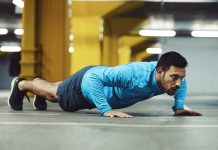
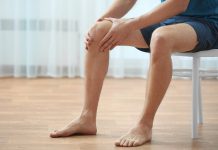









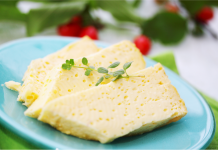







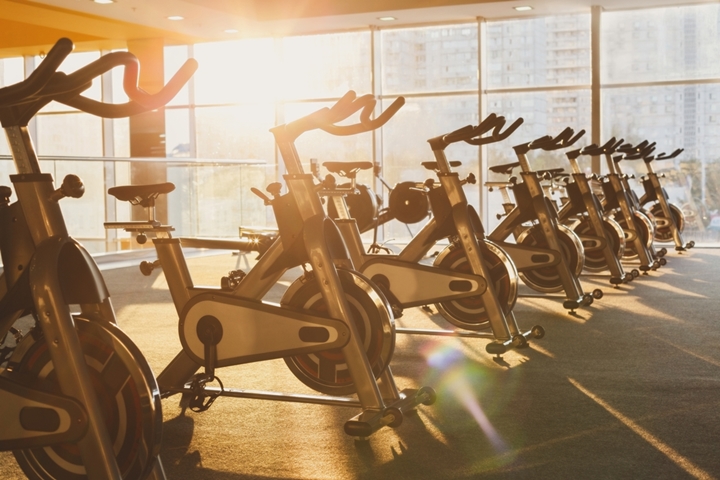



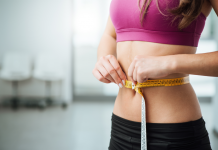







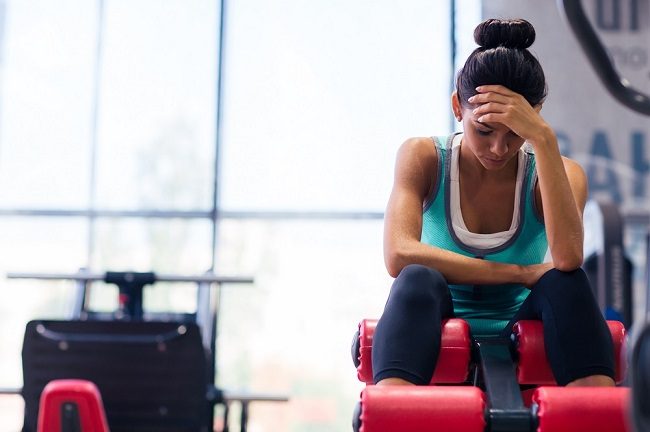
Good
R
[…] Source link […]
Such a great full! post thanks for sharing this wonderful post.
It’s a best exercise for me and thanks for share a different variations.
Well, thanks for share the great article.
Great Post! Thank you so much for sharing this very helpful and informative blog
[…] Supply hyperlink […]
Education is entering a new era in which artificial intelligence will play a pivotal role. Artificial intelligence is already being used to streamline classroom instruction, automate administrative tasks, and give students more individualized feedback. Improvements in assessment procedures and pedagogical layout are also being motivated by this.
There are many exercise that can help us to make our self fit, but squat are always there to help in a good manner. Thanks for the information, subscribed your blog.
Coreball is an addictive online video game that you won’t be able to put down! Zigzag your way to high ratings!
Core ball is a science fiction mini-board game for 2-4 gamers created by Burning Gamings and Big Youngster Creatives, where gamers will use their methods, press, and hack to conquer an ever-changing floating board.
The phrase “chat is core ball game” is not a commonly used phrase, so it is difficult to say exactly what it means. However, based on my knowledge, it seems that the phrase may be used to describe the importance of communication in sports. In many sports, communication between teammates is essential for success. Players need to be able to communicate effectively in order to coordinate their movements, strategize, and make adjustments during the game.The phrase “chat is core ball game” could also be used to describe the importance of social interaction in sports. Sports can be a great way to meet new people and make friends. Players often form close bonds with their teammates, and these relationships can be just as important as the skills they learn on the field.
They are excellent for isolating and targeting specific muscles, enhancing muscle definition, and addressing muscle imbalances. Ultimately, the ideal approach is to incorporate a combination of both compound and isolation exercises into a well-rounded workout routine to achieve comprehensive muscle development and overall functional fitness, best place to buy trenbolone online will help to do so. By understanding the strengths of each type of workout, individuals can tailor their training to meet their specific needs and goals effectively.
Whether it’s designing layouts, integrating multimedia elements, or optimizing for SEO, a no code cms platform offers a seamless and efficient solution for crafting and maintaining dynamic and engaging web experiences.
Gracias por compartir tu experiencia a través de este artículo. Tu pasión por el tema brilla a través de tus palabras, lo que hace que el contenido sea informativo y agradable.El Clicks Por Segundo me ha ayudado a controlar mi progreso en mi rutina de ejercicios. ¡Es genial!
When it comes to timeless fashion staples for men, one item that stands out is the classic brown leather jacket man. It’s not just a piece of clothing; it’s an iconic symbol of ruggedness, style, and attitude. Why, you ask? Let’s dive into the world of brown leather jackets and explore why they are an absolute must-have in every stylish man’s wardrobe.
Monkey Type is an engaging and educational typing game designed to enhance typing skills. With its entertaining gameplay and focus on speed and accuracy, Monkey Type offers a fun way to improve your typing abilities. By practicing regularly and implementing effective typing strategies, you can gradually increase your WPM score and typing accuracy. So, if you’re looking to enhance your typing skills while having a great time, give Monkey Type a try and watch your typing prowess soar.
typemokey
Having a gym or incorporating regular exercise into your lifestyle can have numerous benefits. Get yourself customised gym application and share all the tips to healthy lifestyle.
Backend development is like the foundation of a building, providing stability and support. Similarly, the 7 squat variations you mentioned in your blog post enhance the foundation of a workout routine. Just asBackend Development ensures reliable and efficient data handling, these squat variations target different muscle groups, enhancing overall strength and flexibility. Both aspects contribute to a solid and well-rounded system, whether it’s a software application or a fitness regimen.
Squats are indeed a foundational exercise, and adding variety keeps workouts engaging. The Goblet Squat, with its focus on glutes, core, and more, brings a refreshing twist to traditional squats. While fitness diversity matters, so does innovation in other areas like healthcare. Incorporating electronic communication in healthcare revolutionizes patient-doctor interactions, enabling quicker consultations, secure data sharing, and enhanced accessibility to medical expertise. Just as varied squats benefit workouts, diversified technological approaches advance healthcare, promoting efficiency and improved patient care.
Engaging in various squat variations is indeed a fantastic way to enhance the effectiveness of your workout routine. The classic Goblet Squat, with its unique weight placement resembling a goblet, effectively targets essential muscle groups such as glutes, core, hamstrings, lower back, and shoulders. Incorporating diverse squat exercises not only prevents monotony but also ensures a well-rounded development of your body. It’s akin to the complexity of mastering 2,400 levels of Chess, where each variant challenges different aspects, making your fitness journey both dynamic and rewarding.
Introducing a versatile Womens Jacket that seamlessly blends style and functionality, enhancing your wardrobe and providing reliable protection against the elements.
I appreciate all of the time and effort you took to share your knowledge. This is a great thing to spread. Proceed. Thank you for sharing.
Thank you for providing this information. I value the personal experiences and insights you shared in your essay. Proceed.
At Cpsymbol.com, we make it easy for you to find and use a wide variety of symbols, characters, and special icons for your digital needs. Whether you’re looking to enhance your social media posts, emails, documents, or any other online content, our site provides a comprehensive collection of copy and paste symbols at your fingertips or one-click only. https://cpsymbol.com/
The above game is Klondike Solitaire, also more commonly known as Solitaire. It is a type of card games played by one person, Solitaire can be played offline on a computer or with a deck of standard cards. You can also play online in Solitaire 247.
Mahzong is a captivating game steeped in tradition and strategy, captivating players worldwide for centuries. Originating in China during the Qing dynasty, Mahjong has blossomed into a beloved hobby cherished by millions. Its enduring popularity stems from its unique blend of skill, strategy, and social interaction, making it a cherished pastime among friends and families.
4 Pics 1 Word offers endless brain teasers, challenging you to think outside the box and find the clever link between diverse images. It’s a fun and engaging way to sharpen your vocabulary, improve your problem-solving skills, and boost your lateral thinking. Whether you’re a puzzle enthusiast or just looking for a quick mental workout, 4 Pics 1 Word provides hours of captivating entertainment.
Wordle123, the premier destination for Wordle enthusiasts and puzzle lovers alike! Our mission is to provide you with the best Wordle gaming experience, whether you’re a seasoned pro or a newcomer eager to dive into the world of word puzzles. At Wordle123, we believe that the joy of solving puzzles is a universal delight, and we’re here to make that experience even more rewarding.
DrawingPhotos.Com is one of the great resources for parents or children to learn drawing, or how to draw in many themes: from popular Animals to cute Cartoon characters, from beautiful flowers to many plants and fruits, from vehicles to favorite game pictures, and drawing for holidays like Christmas, New Year, or Halloween, … Stay with us, new photos for drawing will be updated every day!
In the competitive landscape of modern business, having the right technology is crucial for driving success and innovation. As a trusted Hewlett Packard Enterprise (HPE) partner in Dubai, UAE, TierOne is committed to delivering cutting-edge IT solutions that HPE partner in Dubai UAE empower businesses to streamline their operations and accelerate growth. HPE, a global leader in IT infrastructure, offers a wide range of advanced products and solutions, including high-performance servers, storage systems, networking solutions, and cloud platforms. By partnering with HPE, TierOne ensures that businesses in Dubai have access to the best technology to meet their unique needs and remain competitive in an ever-evolving market.
Core ball is an addicting online game that you won’t be able to put down! Zigzag your way to the high score! Coreball (also named “Core Ball”) is a classic little arcade game that can be played online.